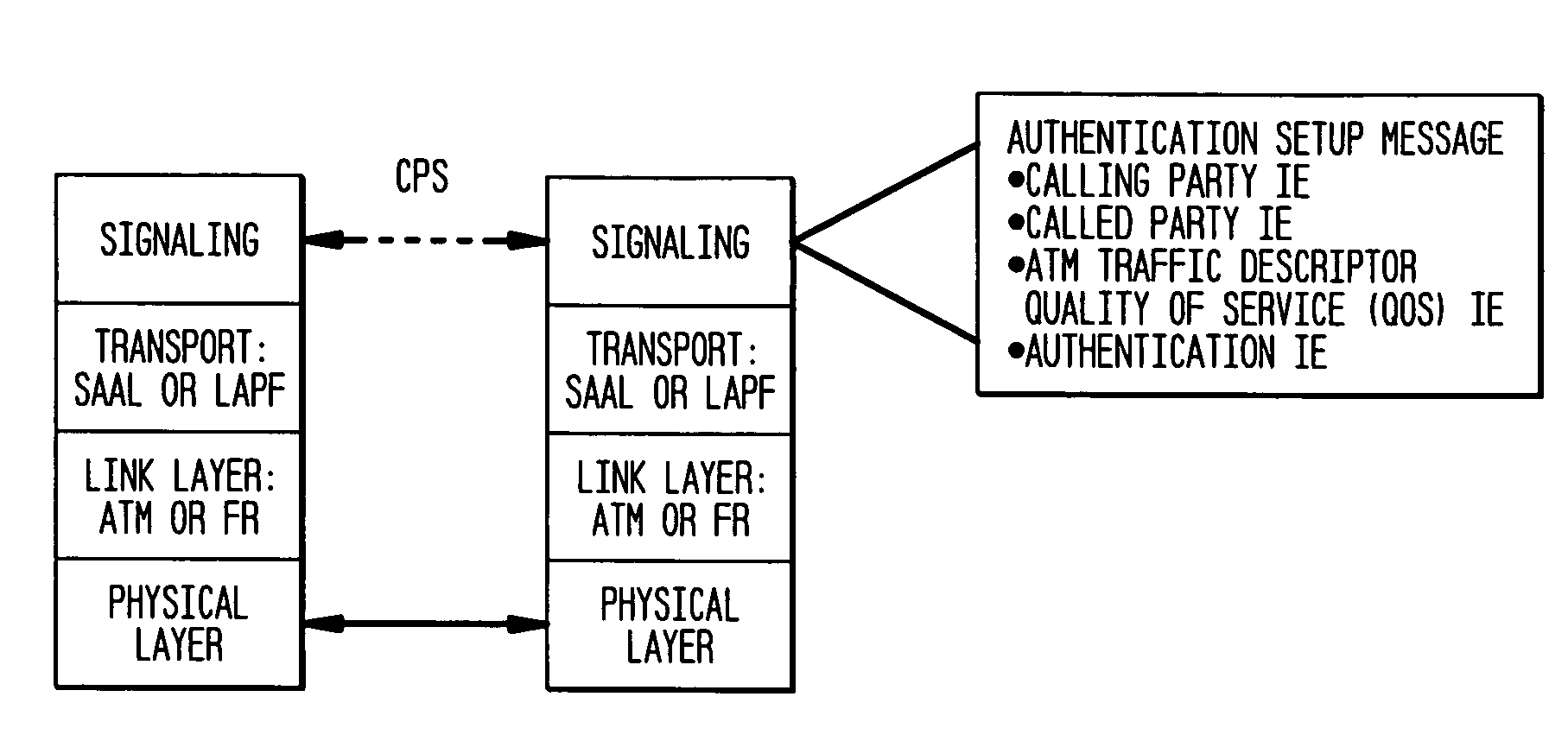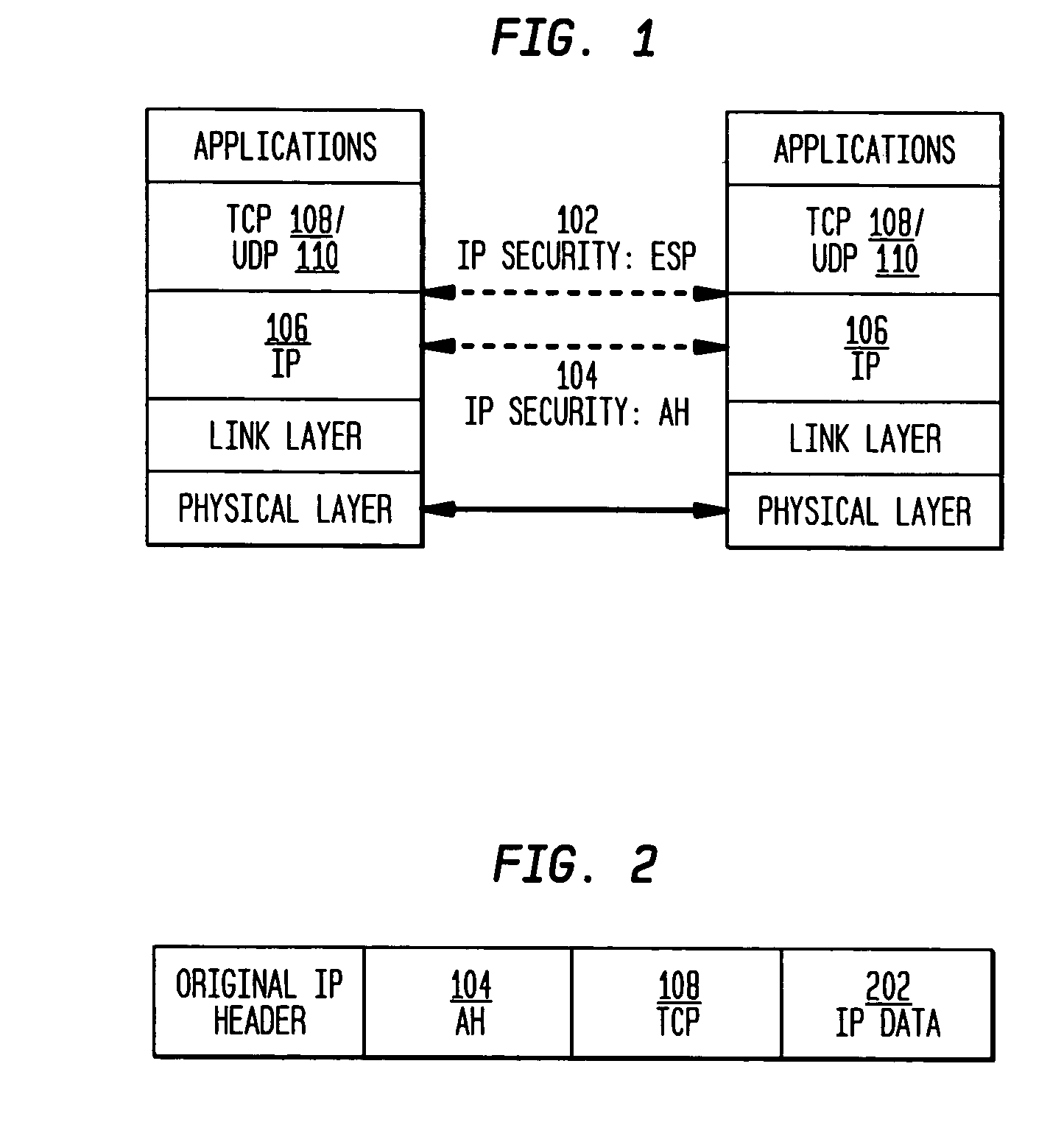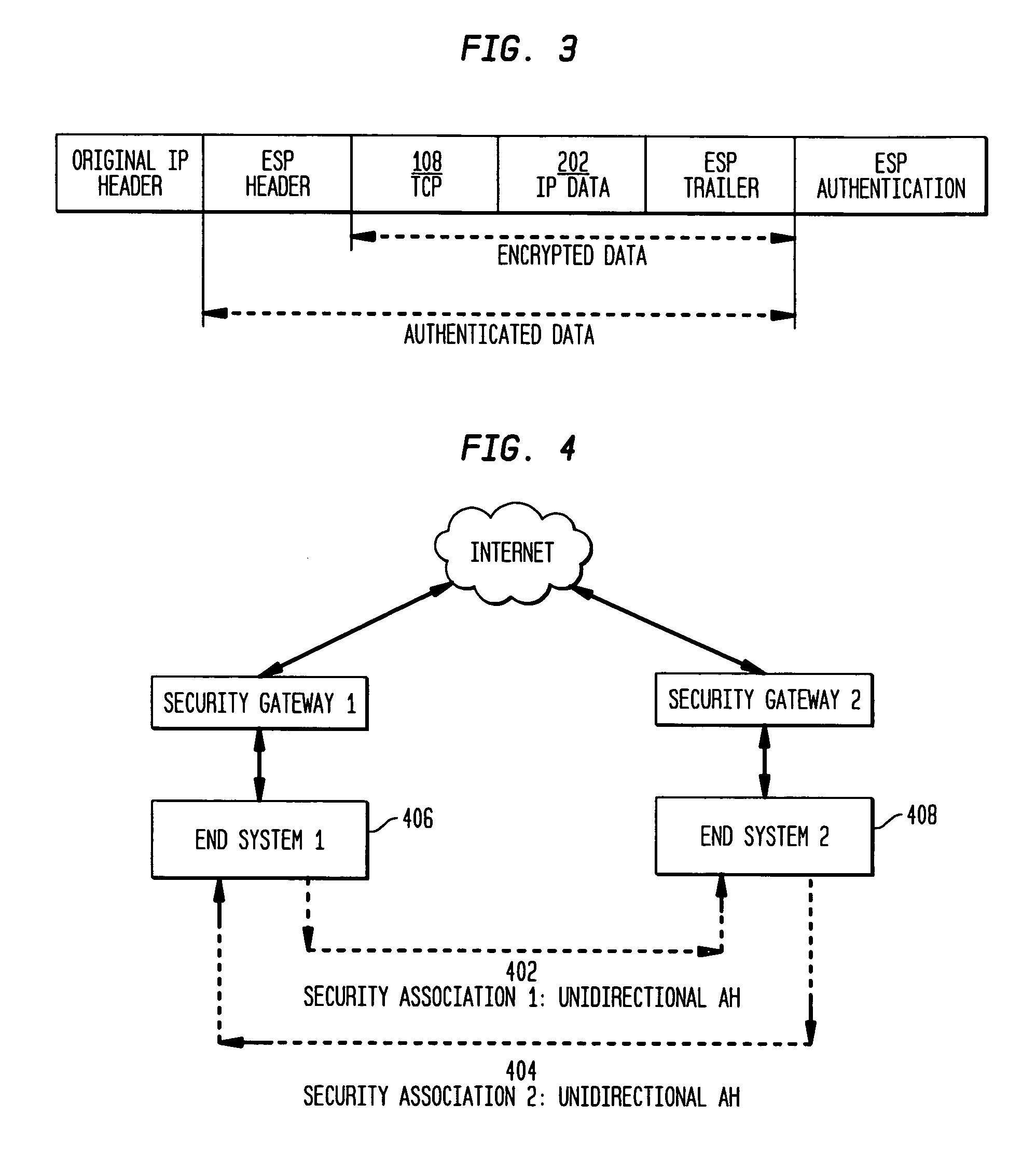Authentication mechanisms for call control message integrity and origin verification
a call control and authenticity technology, applied in the field of authenticity mechanisms for call control message integrity and origin verification, can solve the problems of increasing message processing time, affecting the implementation of ssm, and complex snmp portion of fr ssm than its atm counterpar
- Summary
- Abstract
- Description
- Claims
- Application Information
AI Technical Summary
Benefits of technology
Problems solved by technology
Method used
Image
Examples
case 2
[0065]Once the call initiation phase has begun, it is the responsibility of the key authority to flood any key changes to its peers or end systems. In the next six subsections, the state machine for each case will be described in the order in which the state occurs during call initiation. FIGS. 13, 14, and 15 provide a graphical representation of these state machines and their interactions. That is, these figures represent the invention's processing of various key distribution cases. These cases are numbered and described in detail below. These numbers correspond to the numbered paths depicted in the figures. In all signaling and SNMP interactions described below, several underlying assumptions apply. First, all SNMP requests received by an interface must contain the HMAC MD5 digest computed over the entire message, less the digest, with the sender's key. Second, all SNMP requests must be authenticated using the sender's key before being processed. This provides authentication of th...
PUM
 Login to View More
Login to View More Abstract
Description
Claims
Application Information
 Login to View More
Login to View More - R&D
- Intellectual Property
- Life Sciences
- Materials
- Tech Scout
- Unparalleled Data Quality
- Higher Quality Content
- 60% Fewer Hallucinations
Browse by: Latest US Patents, China's latest patents, Technical Efficacy Thesaurus, Application Domain, Technology Topic, Popular Technical Reports.
© 2025 PatSnap. All rights reserved.Legal|Privacy policy|Modern Slavery Act Transparency Statement|Sitemap|About US| Contact US: help@patsnap.com



